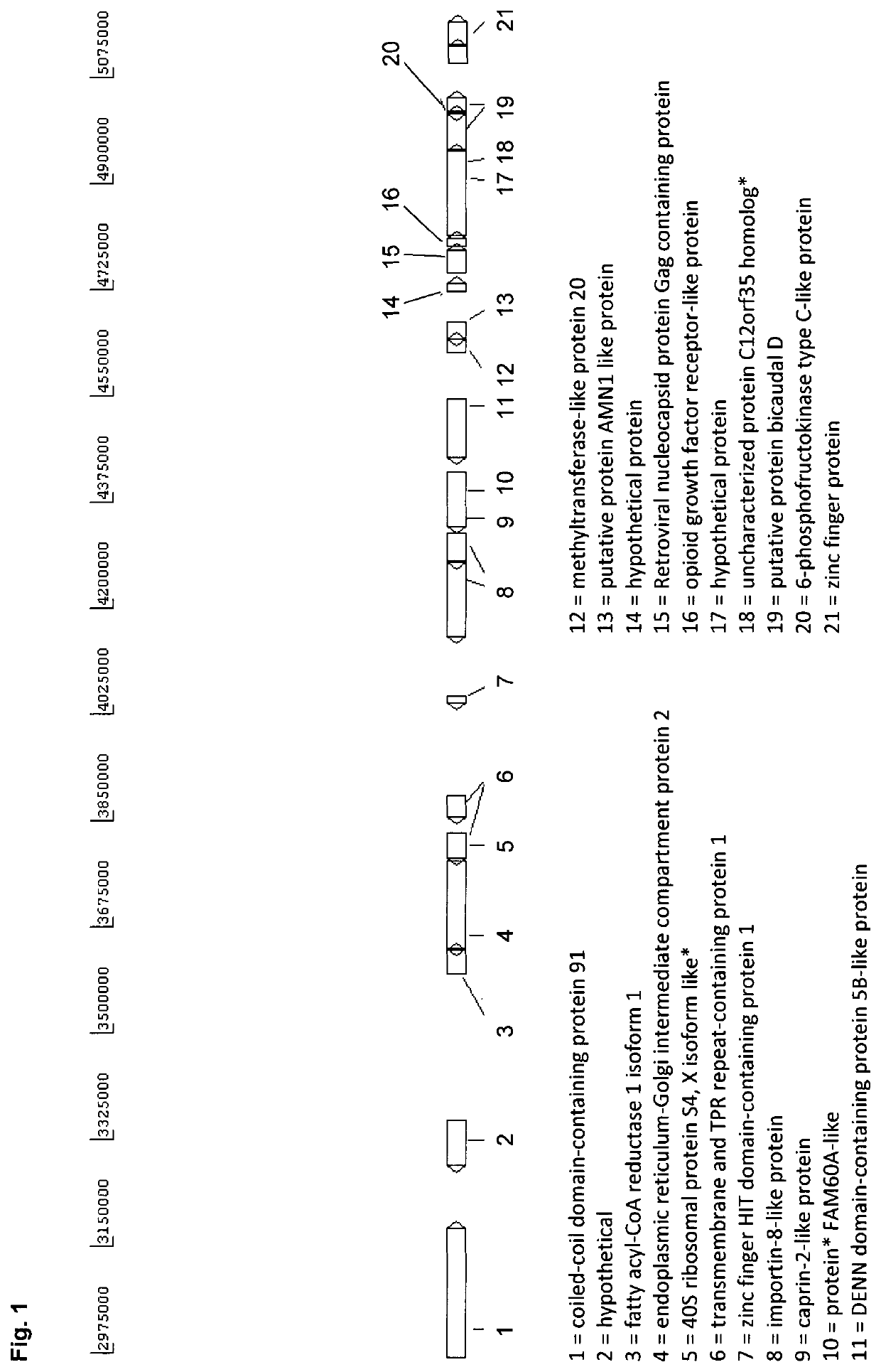Eukaryotic cells and methods for recombinantly expressing a product of interest
a technology of eukaryotic cells and products, applied in the field of recombinant expression technologies, can solve the problems of loss of recombinant protein expression in cell clones, instability seriously affects the industrial production process of recombinantly produced polypeptides, and expression yield declines, so as to improve the effect of protein fam60a and reduce or eliminate the functional expression of gene fam60a
- Summary
- Abstract
- Description
- Claims
- Application Information
AI Technical Summary
Benefits of technology
Problems solved by technology
Method used
Image
Examples
example 1
Knock-Out of FAM60A in CHO Cells Using TALEN Technology
[0176]Two cell clones on the basis of CHO cells derived from the cell line CHO-K1 were made that comprise a knock-out mutation in the FAM60A gene. For creating the FAM60A mutant cells, TALEN (Transcription Activator-Like Effector Nucleases) technology was used. For the knock-out of FAM60A, a coding region (presumed exon 1) of the gene FAM60A was targeted. The CHO-K1 cells used as parental cell only contain one copy of FAM60A. Thus, a single knock-out per cell is sufficient to impair the effect of FAM60A in said cell.
1. Design / Production and Use of TALENs which are Specific for FAM60A
[0177]The following genomic DNA exon sequence of gene FAM60A of the CHO parental cell line was targeted:
[0178]
(SEQ ID NO: 23)atgtttggttttcacaagccaaagatgtaccgaagtatagagggctgctgtatctgcagagccaagtcctccagctctcggttcacggacagtaaacgttatgaaaaggacttccagagctgttttgg
[0179]The nucleotides of the TALEN binding sites are marked in bold. Two TAL Fok I targeting the co...
example 2
Reducing C12orf35 Gene Expression by RNA Interference (RNAi) Increases Expression Yield
[0191]As described above, it is particularly preferred to additionally impair the effect of the expression product of gene C12orf35 in the eukaryotic cell wherein the effect of the FAM60A protein is impaired. Suitable methods for achieving impairment are described above and include, but are not limited to, reducing or eliminating functional expression of the endogenous C12orf35 gene. It was found that impairing the effect of the expression product of gene C12orf35 in a eukaryotic cell, such as preferably in a mammalian cell, surprisingly significantly increases the expression yield of a recombinant polypeptide of interest that is expressed from the respective cells. This beneficial effect with respect to expression yield that is obtained when reducing functional expression of gene C12orf35 is demonstrated in this example 2.
[0192]In order to demonstrate that reducing expression of gene C12orf35 res...
example 3
Generation of a CHO Cell Line which Comprises a Deletion in the Telomeric Region of Chromosome 8 which Deletes Gene FAM60A and Gene C12orf35
[0204]A novel CHO cell line (C8DEL) was generated, which comprises a deletion in the telomeric region of the q arm of chromosome 8. The deletion was induced by chromosome breakage. The deleted portion comprised gene FAM60A as well as among others gene C12orf35 which is located telomeric from gene FAM60A (see FIG. 1). Said novel cell line was obtained from a parental cell line derived from CHO-K1. Said cell line with a chromosome break in chromosome 8 was prepared as follows. The parental CHO cells were split at 2E5 cells / ml in culture medium comprising 0.5 μM, 1 μM or 2 μM MTX. After six days the cell viabilities were around 30-40%. Cells were centrifuged at 180×g for 5 min and cultivated in culture medium without MTX to allow the cells to recover until viabilities were above 95% (after ca. 21 days). This procedure was repeated two more times. S...
PUM
| Property | Measurement | Unit |
|---|---|---|
| time | aaaaa | aaaaa |
| time | aaaaa | aaaaa |
| time | aaaaa | aaaaa |
Abstract
Description
Claims
Application Information
 Login to View More
Login to View More - R&D
- Intellectual Property
- Life Sciences
- Materials
- Tech Scout
- Unparalleled Data Quality
- Higher Quality Content
- 60% Fewer Hallucinations
Browse by: Latest US Patents, China's latest patents, Technical Efficacy Thesaurus, Application Domain, Technology Topic, Popular Technical Reports.
© 2025 PatSnap. All rights reserved.Legal|Privacy policy|Modern Slavery Act Transparency Statement|Sitemap|About US| Contact US: help@patsnap.com



